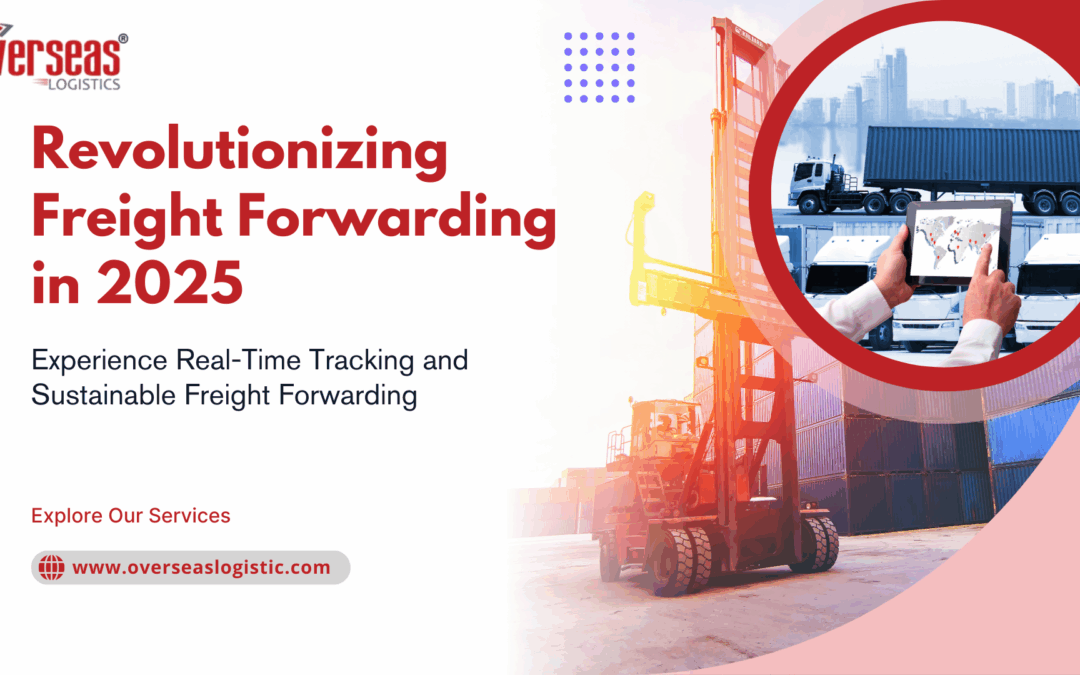The freight forwarding industry in 2025 is undergoing rapid transformation, driven by digital innovation, sustainability demands, and the need for greater supply chain resilience. As global trade accelerates and customer expectations rise, freight forwarders like Overseas Logistics are at the forefront, leveraging new technologies and strategies to deliver seamless, transparent, and efficient logistics solutions.
Freight Forwarding in 2025: What’s Changing and What’s New?
Freight forwarding has evolved from traditional paperwork-heavy operations to highly digitized, data-driven ecosystems. In 2025, several key trends define the industry:
Resilience and Nearshoring: To mitigate risks from long supply chains, companies are increasingly adopting nearshoring—bringing production closer to consumption markets. This shift reduces lead times, enhances flexibility, and helps manage disruptions more effectively.
Sustainability: Environmental concerns are shaping logistics decisions. Freight forwarders are integrating greener transportation options, such as electric vehicles and carbon-neutral shipping, to comply with regulations and meet customer expectations.
E-Commerce and Last-Mile Innovation: The surge in e-commerce continues to drive demand for fast, reliable deliveries. Innovative last-mile solutions and end-to-end shipment visibility are now baseline requirements for freight forwarders.
Data-Driven Decision Making: Advanced analytics, IoT sensors, and real-time data are optimizing routes, inventory, and operational efficiency, giving companies a competitive edge.
How Digital Freight Forwarding Platforms Are Transforming Global Logistics
In 2025, digital freight forwarding platforms function as intelligent ecosystems, seamlessly uniting all facets of logistics by connecting shippers and carriers through advanced AI, blockchain technology, and powerful data analytics.
Key innovations include:
Automated Booking & Real-Time Tracking: Platforms offer instant booking and continuous cargo tracking, improving transparency and efficiency.
Dynamic Pricing & Route Optimization: AI-powered systems adjust pricing based on real-time supply-demand, while forecasting tools help avoid congestion and delays.
Integrated Marketplaces & Management Systems: Digital marketplaces, transportation management systems (TMS), and freight exchanges streamline operations for businesses of all sizes, providing access to a broad network of carriers and logistics services.
Eco-Friendly Operations: Reduced idle mileage and optimized routing contribute to lower CO₂ emissions, supporting sustainability goals.
Popular digital freight platforms shaping the industry include Convoy, Uber Freight, Flexport, Transporeon, and Freightos, each offering unique advantages in automation, analytics, and global reach.
The Impact of 5G and IoT on Freight Tracking and Transparency
The deployment of 5G and IoT technologies is revolutionizing freight tracking and visibility:
Real-Time, Precise Tracking: 5G’s ultra-fast speeds and low latency, combined with IoT-enabled smart sensors, enable instant monitoring of cargo location, condition, and status throughout the journey.
Continuous Data Flow: Unlike traditional barcode scanning, IoT sensors provide continuous updates on location, temperature, humidity, and shock, ensuring comprehensive shipment monitoring.
Network Reliability & Global Connectivity: 5G delivers consistent connectivity even in remote locations, reducing tracking disruptions and enhancing data accuracy.
AI and Automation: Integrated with AI, 5G and IoT facilitate predictive maintenance, automated cargo handling, and advanced analytics for route and schedule optimization.
Improved Compliance and Security: Enhanced monitoring supports regulatory compliance, especially for sensitive shipments such as pharmaceuticals and perishables.
The Role of Overseas Logistics in the New Era
Overseas Logistics is leveraging these innovations to provide world-class freight forwarding services:
Comprehensive Logistics Planning: Managing customs paperwork, carrier coordination, and route optimization for seamless international shipments.
Technology-Driven Transparency: Utilizing digital platforms, IoT sensors, and real-time data to offer clients end-to-end visibility and control over their supply chains.
Sustainable Solutions: Integrating eco-friendly transportation modes and optimizing routes to reduce environmental impact.
Risk Mitigation and Resilience: Diversifying supply chain sources, adopting nearshoring strategies, and using real-time tracking to proactively manage risks and disruptions.
Customer-Centric Approach: Providing tailored solutions for eCommerce, time-sensitive cargo, and specialized industries, ensuring compliance and efficient delivery worldwide.
Conclusion
The freight forwarding landscape in 2025 is defined by digital transformation, sustainability, and real-time transparency. As advanced technologies like digital platforms, 5G, and IoT become industry standards, companies like Overseas Logistics are setting benchmarks for efficiency, resilience, and customer satisfaction in global logistics.
By embracing these trends and innovations, Overseas Logistics ensures its clients remain competitive in an ever-evolving marketplace—delivering goods faster, greener, and with unprecedented visibility.

